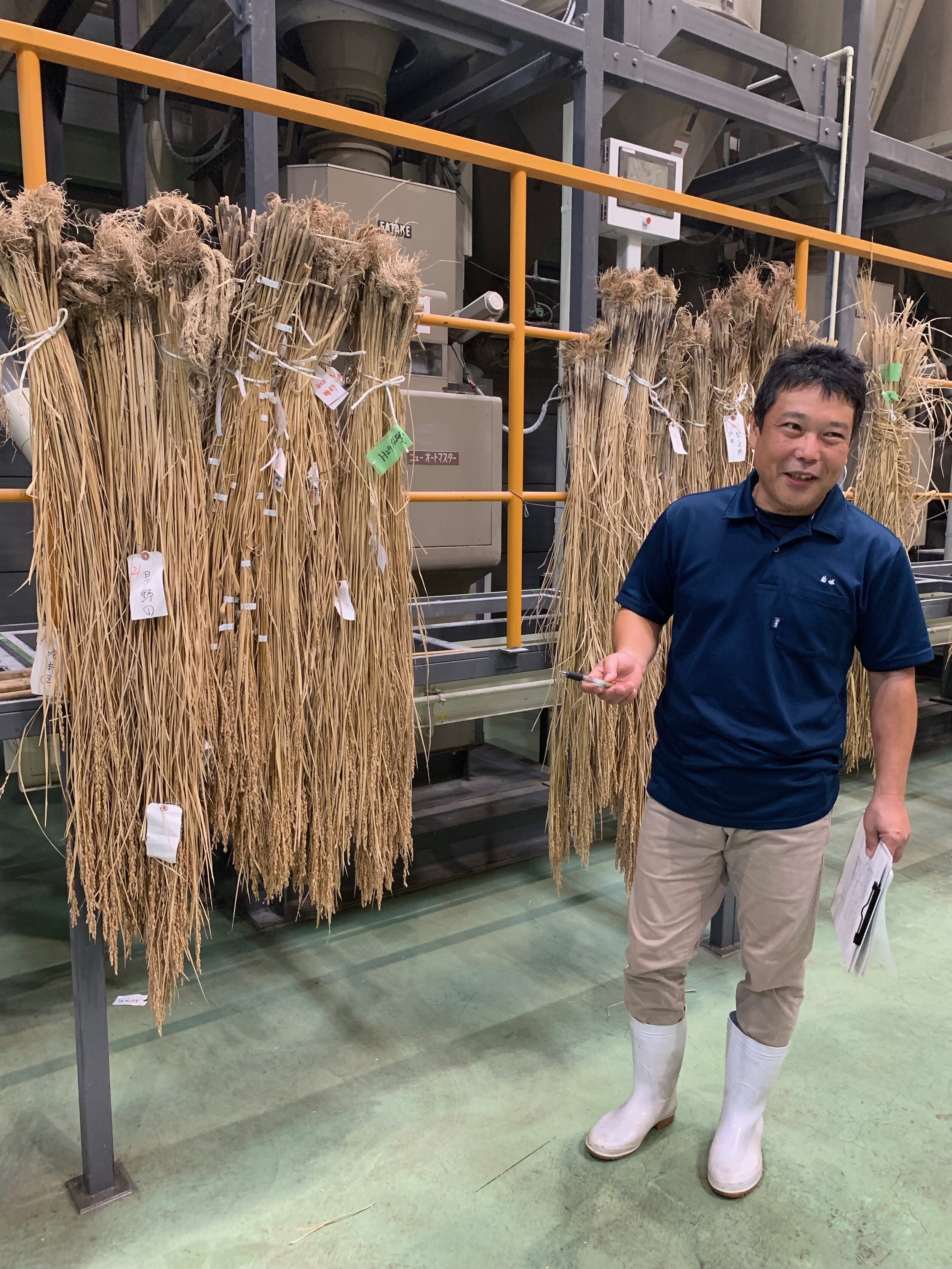Rice, Water, Earth: Notes on Sake
These posts are the continuation of my thoughts and reporting on sake for the James Beard award-winning Exploring the World of Japanese Craft Sake, which I co-wrote with sake sommelier and Sake Samurai Michael Tremblay.

Keita Akaboshi: Pairing Sake with Japanese Convenience Store Sweets and Snacks
“There is no one correct pairing for a sake, each pairing is merely one proposal.”
—Keita Akaboshi, Tokyo sake sommelier

Arkansan Chris Isbell: America's Pioneering Premium Sake Rice Farmer, Part II
The early 1990s were the celebrity years for Isbell and his farm. He counted a total of 100 articles written about him and his Koshihikari rice in the Japanese press, which in turn brought Japanese tourists by the Greyhound bus load…. A film crew from Japanese broadcaster NHK embedded at the farm for a year to make a 90-minute documentary on him.

Islander Sake Brewery: Reviving a Hawai'ian Sake Brewing Tradition
“Just as for human beings, there is an optimal level of stress that one should put on the microbes involved in sake fermentation.”

Courtney Kaplan: Introducing Small Craft Brewers to L.A. Diners
The East Village sake bar Decibel “served fifty or sixty sakes by the glass and was an institution. After closing we could try anything we wanted, so it was a tremendous tasting opportunity.”

RWE: Notes on Sake is on Hiatus
I’ll be back soon!

Sake Lovers: Yuki Imanishi and Kyoko Nagano Build Bridges Between Japanese Sake and Foreign Buyers
“We have so many sake retailers here in Japan and sites that introduce sake to Japanese people, plus online retail sites like Rakuten and Amazon. But a lot of expats don’t know where to find good sake.”

Arkansan Chris Isbell: America's Pioneering Premium Sake Rice Farmer
Chris Isbell, a third-generation family farmer in Central Arkansas, grows some of America’s best sake rice.

Challenging Times at British Columbia's YK3 Brewery
“I still think that sake, especially when it’s made locally, has the potential to grow. But I have to admit that Covid has significantly slowed the growth of the sake market in BC.”

Hishiroku Kyoto: Japan's Oldest Koji Merchant
“During World War II my grandmother was arrested and put in jail on suspicion of diverting rice to be sold on the black market for food.”

The Story Behind the Sake Label: Terada Honke's "Gonin Musume"
Keisuke truly loved microbes—after all, they had restored him to life! So he decided he wanted to return to the healthier, pre-industrial ways of sake making where no chemical inputs were used and the living microbes were not completely removed.

Tsurunoe Brewery: A Family Business Where Women Play Key Brewing Roles
“As I leapt into the world of sake brewing, many people cheered me on, saying, ‘This is a traditional livelihood that we want to see preserved.’”

Is Sake Good for Your Health?
“I believe that drinking a little sake every day is good for customers’ health.” — So Okasora, Chiyomusubi Brewery.

America's First Sake-Making Dynasty?
Because it was created as a brand that would represent San Francisco, Olivia says, “I wanted to get creative with the naming.” She also wanted to convey that this was a different kind of nigori sake. “Hazy,” accurately described its less cloudy characteristic, and adding “Delight,” she realized made it “sound just like a cannabis strain. I thought that was perfect for a uniquely San Francisco sake.”

The Science of Sake Aromas
“Lighter fluid or stove fuel, scorched oil, a vinegar dressing, a deviled egg, a just-unwrapped cheese, a sip of wine or rum: all offer distant echoes of the early cosmos, sensible traces of the inherent, relentless creativity with which matter explores its own possibilities.”

Sake as a Window on The World: The Aramasa Brewing Year Calendar
“I selected these pictures and poems because I want people to understand sake as one expression of the world, not just as a taste.” — Yusuke Sato, owner-brewery, Aramasa Brewery

Challenged by Covid-19, Sake Makers Turn to Distilling Spirits
One of the attractions of the growing Japanese craft gin movement, along with expert blending, is its use of indigenous botanicals.

RWE: Notes on Sake is on Hiatus
Rice, Water, Earth: Notes on Sake is on hiatus for the next month.

Sawada Brewery: Weaving Rope Baskets, Sticking to Tradition
Although today you can find a small but growing number of breweries that are going back to traditional Edo or even pre-Edo period sake-making styles (Aramasa Brewery in Akita and Senkin Brewery in Tochigi are two), Sawada Brewery is rare in that it never really gave up these traditions.

Seven Ways to Smell the Roses: Exploring the World of Sake Flower Yeasts
The Tokyo University of Agriculture has historically had close ties with Japan’s Imperial family. In part this was because as quasi-gods, a large part of the family’s mandate was to protect the livelihood of the nation’s farmers.

The Secret Language of Sake Labels: Zaku “Ho no Tomo”
“It’s my wish that you make this sake as if it were your own child.”

